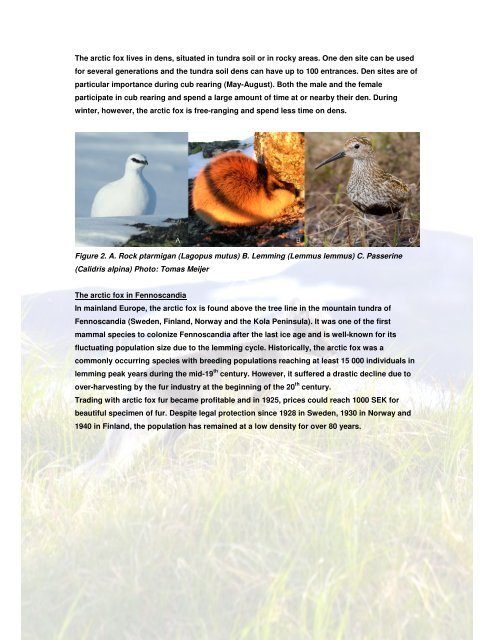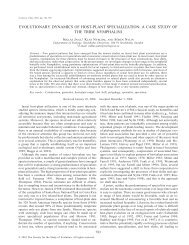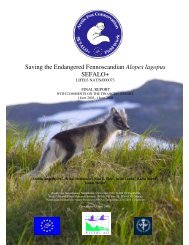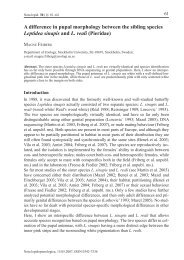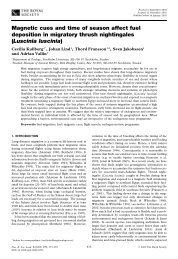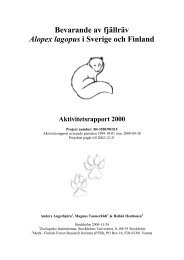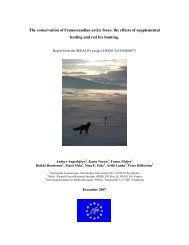Layman's report
Layman's report
Layman's report
Create successful ePaper yourself
Turn your PDF publications into a flip-book with our unique Google optimized e-Paper software.
The arctic fox lives in dens, situated in tundra soil or in rocky areas. One den site can be used<br />
for several generations and the tundra soil dens can have up to 100 entrances. Den sites are of<br />
particular importance during cub rearing (May-August). Both the male and the female<br />
participate in cub rearing and spend a large amount of time at or nearby their den. During<br />
winter, however, the arctic fox is free-ranging and spend less time on dens.<br />
Figure 2. A. Rock ptarmigan (Lagopus mutus) B. Lemming (Lemmus lemmus) C. Passerine<br />
(Calidris alpina) Photo: Tomas Meijer<br />
The arctic fox in Fennoscandia<br />
In mainland Europe, the arctic fox is found above the tree line in the mountain tundra of<br />
Fennoscandia (Sweden, Finland, Norway and the Kola Peninsula). It was one of the first<br />
mammal species to colonize Fennoscandia after the last ice age and is well-known for its<br />
fluctuating population size due to the lemming cycle. Historically, the arctic fox was a<br />
commonly occurring species with breeding populations reaching at least 15 000 individuals in<br />
lemming peak years during the mid-19 th century. However, it suffered a drastic decline due to<br />
over-harvesting by the fur industry at the beginning of the 20 th century.<br />
Trading with arctic fox fur became profitable and in 1925, prices could reach 1000 SEK for<br />
beautiful specimen of fur. Despite legal protection since 1928 in Sweden, 1930 in Norway and<br />
1940 in Finland, the population has remained at a low density for over 80 years.


